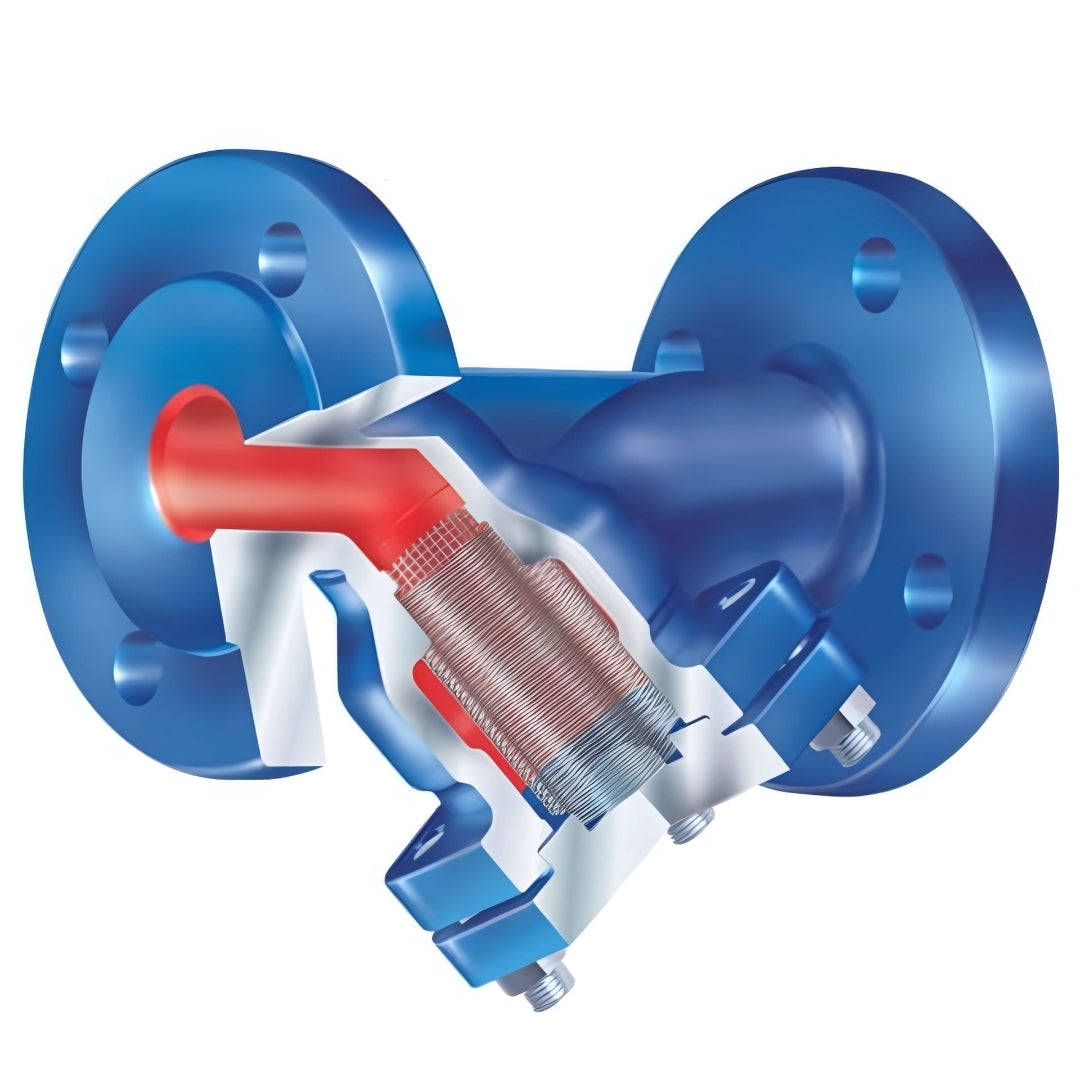Steam Valves
ARI Y-Type Strainer (Flanged PN25, Nodular Iron Body)
ARI Y-Type Strainer (Flanged PN25, Nodular Iron Body)
Couldn't load pickup availability
The ARI Y-Type Strainer with Flanged PN25 connections and a nodular iron body is designed to protect pipeline components by removing unwanted particles such as rust, scale, and debris. Its Y-pattern design ensures efficient flow with minimal pressure loss, making it ideal for use in steam, water, oil, and other non-aggressive media.
Built from durable nodular cast iron, the body offers excellent strength and fatigue resistance, withstanding pressures up to 25 bar. A stainless steel mesh screen traps impurities while allowing easy access for cleaning or replacement via the blow-off connection or strainer cover. This makes it a dependable choice for use in heating systems, district energy networks, and industrial process lines.
Key Features
Pressure Rating: PN25
Suitable for medium to high-pressure systems up to 25 bar.
Nodular Cast Iron Body
Tough and durable with excellent resistance to cracking and fatigue.
Flanged DIN Ends
Ensure secure, reliable installation and compatibility with standard pipework.
Y-Type Design
Compact and efficient, reduces pressure drop while maintaining high flow rates.
Stainless Steel Strainer Element
Long-lasting and corrosion-resistant filtration screen for particle retention.
Blow-Off Port
Enables easy sediment removal and simplified maintenance.
Share

FAQ's
What is the difference between a valve and an actuator?
What types of actuators are available?
The main types of actuators are:
Pneumatic actuators – use compressed air for fast, reliable operation.
Electric actuators – use electrical power for precise control.
Hydraulic actuators – use fluid pressure for high-torque applications.
Each type offers unique advantages depending on the environment, media, and system control needs.
How do I choose the right actuator for my valve?
To select the correct actuator, consider:
Valve type and torque requirement
Power source available (air, electric, or hydraulic)
Operating environment (temperature, humidity, hazardous area)
Control signal type (on/off or modulating)
Matching actuator torque and compatibility with the valve’s ISO mounting ensures reliable performance.
What are the main types of valves used in automation?
The most common valves in automated systems include:
Ball valves – for tight shutoff and quick operation.
Butterfly valves – for larger flow control with compact design.
Globe valves – for precise throttling and flow regulation.
Check valves – to prevent backflow.
Gate valves – for full bore flow isolation.
What’s the difference between a double-acting and spring-return actuator?
Double-acting actuators use air (or power) to both open and close the valve.
Spring-return actuators use air to open (or close) the valve, and a built-in spring to automatically return it to a safe position when power or air is lost — ideal for fail-safe operation.
How often should valves and actuators be serviced?
Regular maintenance intervals depend on operating conditions, but a good rule of thumb is to inspect every 6–12 months.
This includes checking for leaks, lubrication, seal wear, and actuator responsiveness to prevent unexpected downtime.

